
Alfred Damon Runyon was an American newspaperman and short-story writer.

Walter Winchell was a syndicated American newspaper gossip columnist and radio news commentator. Originally a vaudeville performer, Winchell began his newspaper career as a Broadway reporter, critic and columnist for New York tabloids. He rose to national celebrity in the 1930s with Hearst newspaper chain syndication and a popular radio program. He was known for an innovative style of gossipy staccato news briefs, jokes and Jazz Age slang. Biographer Neal Gabler credited his popularity and influence meant “He turned journalism into a form of entertainment.”
A telethon is a televised fundraising event that lasts many hours or even days, the purpose of which is to raise money for a charitable, political or other purportedly worthy cause.

The American Cancer Society (ACS) is a nationwide voluntary health organization dedicated to eliminating cancer. Established in 1913, the society is organized into six geographical regions of both medical and lay volunteers operating in more than 250 Regional offices throughout the United States. Its global headquarters is located in the American Cancer Society Center in Atlanta, Georgia. The ACS publishes the journals Cancer, CA: A Cancer Journal for Clinicians and Cancer Cytopathology.

Susan G. Komen is a breast cancer organization in the United States.

The St. Baldrick's Foundation is a not-for-profit organization with the aim of raising funds to help find cures for children with cancer. The name of the foundation is not associated with a recognized Saint of the Catholic Church, but is founded on word play and appropriation of the title of sainthood. Volunteers sponsored by family, friends, and employers shave their heads or "chop" their ponytails in solidarity with children who typically lose their hair during cancer treatment in order to raise funds.

The National Psoriasis Foundation (NPF) is the world's largest nonprofit organization serving people with psoriasis and psoriatic arthritis. The NPF provides information and services to help people manage their condition, while supporting research to find a cure. In addition to serving more than 3 million people annually through patient and professional health education and advocacy initiatives, the NPF has funded more than $10 million in psoriatic disease research grants and fellowships.
The Jane Coffin Childs Memorial Fund for Medical Research, established in 1937, awards the "Jane Coffin Childs Postdoctoral Fellowship" for research in the medical and related sciences bearing on cancer.
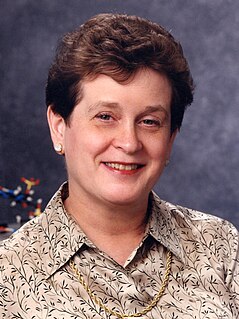
Wilma K. Olson is the Mary I. Bunting professor at the Rutgers Center for Quantitative Biology (CQB) at Rutgers University. Olson has her own research group on the New Brunswick campus. Although she is a polymer chemist by training, her research aims to understand the influence of chemical architecture on the conformation, properties, and interactions of nucleic acids.
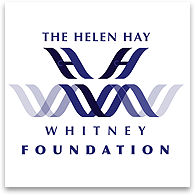
The Helen Hay Whitney Foundation, established in New York in 1943 by Joan Whitney Payson in cooperation with the estate planning of her mother, Helen Hay Whitney (1875–1944), awards the "Helen Hay Whitney Postdoctoral Fellowship" for support postdoctoral research in the biomedical sciences.
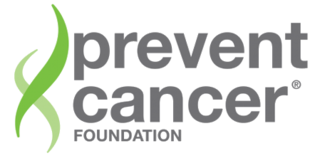
The Prevent Cancer Foundation (PCF) is a United States-based charity, and one of the leading US health organizations devoted to the early detection and prevention of cancer.
Andrew D. Luster is the Persis, Cyrus and Marlow B. Harrison Professor of Medicine at Harvard Medical School, and the Chief of the Division of Rheumatology, Allergy and Immunology at Massachusetts General Hospital. He is Director of its Research Center for Immunology and Inflammatory Diseases, and a member of the Dana-Farber/Harvard Cancer Center's Cancer Immunology program.
Ovarian Cancer Research Alliance (OCRA) is a not-for-profit organization focused on ovarian cancer research, advocacy and patient support. The organization was formed in January 2016 when the former not-for-profit organization Ovarian Cancer Research Fund, which focused primarily on ovarian cancer research, combined with Ovarian Cancer National Alliance, which focused primarily on ovarian cancer advocacy and support programs, to form one organization.
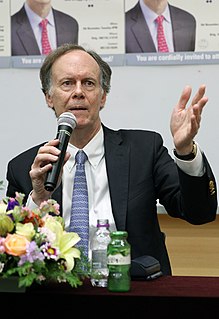
William G. Kaelin Jr. is an American Nobel Laureate physician-scientist. He is a professor of medicine at Harvard University and the Dana-Farber Cancer Institute. His laboratory studies tumor suppressor proteins. In 2016, Kaelin received the Albert Lasker Award for Basic Medical Research and the AACR Princess Takamatsu Award. He also won the Nobel Prize in Physiology or Medicine in 2019 along with Peter J. Ratcliffe and Gregg L. Semenza.
Nathanael S. Gray is a professor of biological chemistry and molecular pharmacology at Harvard Medical School and professor of cancer biology at Dana-Farber Cancer Institute. His work focuses on synthetic chemistry and novel small molecule inhibitors.
Emily P. Balskus is an American chemical biologist, enzymologist, microbiologist, and biochemist born in Cincinnati, Ohio in 1980. She has been on the faculty of the Chemistry and Chemical Biology department of Harvard University since 2011 and is currently the Morris Kahn Associate Professor. She has published more than 80 peer-reviewed papers and three book chapters. Since 2012 she has been invited to give over 170 lectures, has held positions on various editorial boards, and served as a reviewer for ACS and Nature journals among others. Balskus also currently serves as a consultant for Novartis, Kintai Therapeutics, and Merck & Co.
Rafael Fonseca is a Mexican-American physician and researcher. He is the Getz Family Professor of Medicine and Chair of the Department of Internal Medicine at the Mayo Clinic in Arizona.

Helen Jane Dyson is a British-born biophysicist and a professor of integrative structural and computational biology at the Scripps Research Institute in La Jolla, California. She is also currently editor-in-chief of the Biophysical Journal.
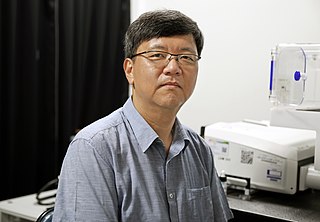
Myung Kyungjae is a biologist researching DNA repair pathways at the molecular level. He is a Distinguished Professor at the Ulsan National Institute of Science and Technology (UNIST) and the Director of the IBS Center for Genomic Integrity located on the UNIST campus. He is on the editorial board of various peer-reviewed journals and is a member of multiple scientific societies.

Susan Kaech is an American immunologist. Kaech is a professor and director of the NOMIS Center for Immunobiology and Microbial Pathogenesis at the Salk Institute for Biological Sciences. She holds the NOMIS Foundation Chair. Her research focuses on the formation of memory T cells, T cell metabolism, and cancer immunotherapy.













